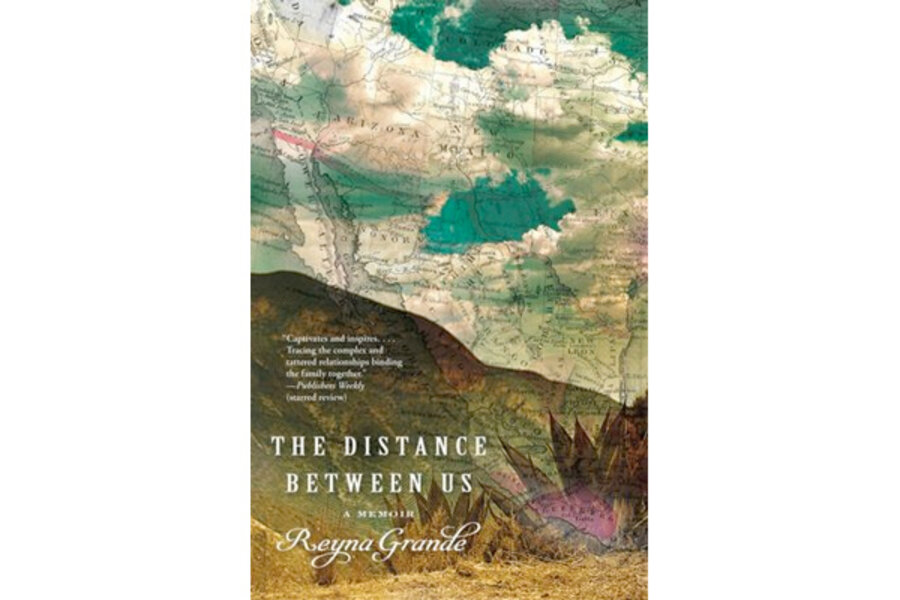The Distance Between Us
For over a decade, Congress has debated the DREAM Act. The bill would grant permanent residency to illegal immigrants who grew up in the United States and who argue they belong more to this country than the one they were born in. Needless to say, the bill is a political football, especially in this election year. Candidates alternatively portray illegal immigration as one of America’s best traditions and the last straw for a weak economy.
While politicians and the public make up their minds, a generation waits. Policy nuances aside, at the heart of the bill is a question of whether we, the United States, want to claim these children as our own, nurture them, and ultimately trust them to take care of us. The question is deeply familiar to Reyna Grande, a 30-something author who has hovered her entire life between Mexico and the United States, between her mother and her father. She tells her achingly sad story of waiting to be wanted in her memoir and third book The Distance Between Us.
Grande’s father illegally crossed into the United States in the late 1970s, leaving his wife and three young children in Mexico. Like many, he went to “El Otro Lado” – the Other Side – to make money and eventually return to his hometown with enough cash to build a house and steer his family out of poverty.
A year later, Grande’s mother left for El Otro Lado, too. Her husband had summoned her, she told the neighbors proudly, because he needed her help. She left the children with their paternal grandmother, promising she would return in a year.
But Grande’s mother never returned – at least not as the same person who tenderly told her children goodbye. The first half of Grande’s memoir, called “Mi Mamá Me Ama” or “My Mother Loves Me,” chronicles her and her siblings’ longing for their mother and the abuses they suffer at the hands of relatives and friends for being orphaned.
Eventually it’s Grande’s father, a person the narrator knows only from a framed photograph, who plucks the children from their misery and smuggles them across the border. But life in the Other Side, as Grande describes in the book’s second half, “The Man behind the Glass,” is no paradise, either. Grande’s father lives with a woman who’s not thrilled to have three lice-infested, malnourished, Spanish-speaking kids sleeping on her floor and eating her groceries. And Grande’s father himself is barely surviving as a manual laborer for a Los Angeles nursing home. Except for the occasional inspirational speech about the importance of education, his childrearing relies heavily on beatings and beer.
Grande effectively keeps the perspective at a child’s eye level. She and her brother and sister aren’t perfect, but they’re heroes. The story rises with hope every time the kids seem to find an ally, only to crash when their would-be protector is unable or unwilling to come through.
To Grande’s immense credit, she also manages to convey the adults’ point of view sympathetically. Miraculously, she even finds reason for gratitude. For instance, although her father withheld nearly all emotional and material sustenance, she notes that at least his refusal to buy junk food kept the children from becoming obese.
These tiny artifacts of value, which Grande dredges from her childhood like aluminum cans out of a trash heap, help create a visceral experience of poverty. As Grande ably shows, poverty is not only the child who cannot have what she desperately needs and wants – a meal, a bed, a filled cavity, a quinceañera, love. Poverty is also the adult who has too little to give. The Grande family story is no less heartbreaking for the want of the parents, who are as ashamed for failing their children as their progeny are disappointed.
Although "The Distance Between Us" doesn’t have the literary virtuoso of, say, "Angela’s Ashes," it accomplishes one of the great things books can do: make an abstract idea real. In Grande’s case, she hardly mentions the DREAM Act except on the dedication page, but the entire story is a case study in immigration policy, North American trade, public school education, and the promise and pitfalls of a capitalist economy. The book doesn’t offer any clear or easy answers, but it does provide a cast of vivid characters who remind readers that even the driest legislation matters.
Kelly Nuxoll is a freelance writer in Washington, D.C.






